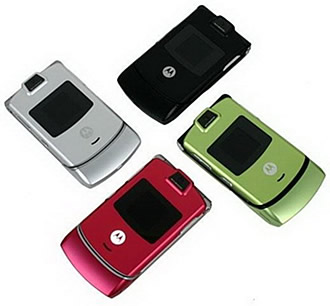Brand Revivals: Bringing the Past Back to the Present
Remember the Razr flip phone of the early to mid-2000’s? Of course you do, because you either had one or looked on with jealousy at all your friends that had one, wishing you too could one day be as cool as them. But then came June 29, 2007, the first iPhone became available to the world, and the decline of the mighty Razr began.
In an attempt to gain the status the Razr once enjoyed Motorola announced this week that they will be reviving the brand with their new Android powered mobile device. When the Razr debuted in 2004 it quickly became the best-selling mobile device (pre-iPhone) and was one of the first devices to make a cell phone more than a necessity but a status symbol and desired accessory. When Motorola decided to revive the Razr brand with its new phone, it can be assumed they are hoping to tap into brand equity that the Razr brand once held in the marketplace.
So, with that let’s take a look at why a company might want to revive a brand.
First of all, brands need reviving after they’ve suffered some sort loss in the market and that more than likely occurs due to two factors:
1.Reduced Functional Benefits: When customers are making a purchasing decision they look for the product that is going to meet their needs, and while a product may meet those needs at one time or another as the customer matures and grows so do their needs.
2.Increased Competition: In the world we live in change happens quickly, and we are constantly bombarded with the “latest and greatest” must-have product, and this is particularly true in the technology industry. With all these product introductions brands are being constantly challenged to stay relevant and appeal to consumers.
Why you would revive a particular brand:
1. Emotional ties: even if a successful brand started to lose steam in the market for whatever reason, there is more than likely a certain emotional tie with that brand from its heyday. After all it wouldn’t have been a success in the first place if there hadn’t been any emotional connection. Brand/Product Managers may want to capitalize on consumer’s sense of nostalgia to help the new product enjoy the success of its predecessor.
2. Reduces Risk/Cost: brand revivals can be a valuable and cost-effective because there is the idea that an already known brand has a given head-start over a completely new brand, and so less needs to be spent on its introduction.
3. Brand Equity: if leveraged in the right way, and the brand equity of the original product is strong enough a new product can build on the equity the original possessed to carry itself through the product launch and beyond
